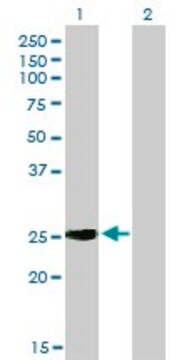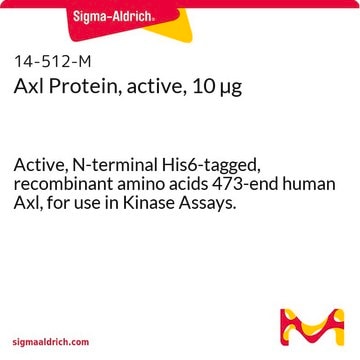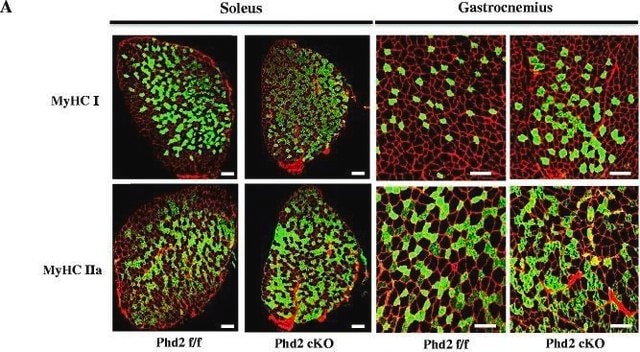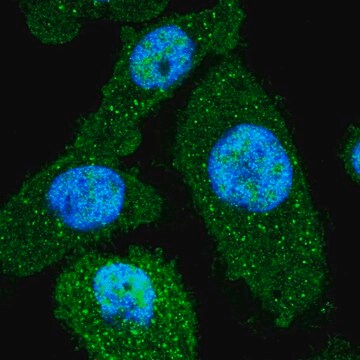Based on the minimum in the van Deemter curves, higher flows than 5um particle columns are required in order to maximize Ascentis Express column efficiency. The suggested starting point for flow rate for Ascentis Express columns: 1.6 mL/min for 4.6 mm ID; 0.8 mL/min for 3.0 mm ID; and 0.4mL/min for 2.1 mm ID.
53848-U
Ascentis® Express 90Å C8 (2.7 μm) HPLC Columns
L × I.D. 5 cm × 3 mm, HPLC Column
Synonyme(s) :
Core-shell (SPP) Fused Core C8 HPLC column
Sélectionner une taille de conditionnement
Sélectionner une taille de conditionnement
About This Item
superficially porous particle
Produits recommandés
Nom du produit
Ascentis® Express C8 HPLC Column, 2.7 μm particle size, L × I.D. 5 cm × 3 mm
Matériaux
stainless steel column
Niveau de qualité
Agence
suitable for USP L7
Gamme de produits
Ascentis®
Caractéristiques
endcapped
Fabricant/nom de marque
Ascentis®
Conditionnement
1 ea of
Paramètres
60 °C temp. range
600 bar max. pressure (9000 psi)
Technique(s)
HPLC: suitable
LC/MS: suitable
UHPLC-MS: suitable
UHPLC: suitable
L × D.I.
5 cm × 3 mm
Superficie
135 m2/g
Impuretés
<5 ppm metals
Matrice
Fused-Core particle platform
superficially porous particle
Groupe de la matrice active
C8 (octyl) phase
Taille des particules
2.7 μm
Dimension de pores
90 Å
Plage de pH de fonctionnement
2-9
Application(s)
food and beverages
Technique de séparation
reversed phase
Vous recherchez des produits similaires ? Visite Guide de comparaison des produits
Description générale
Visit the Ascentis Express home page for more information on this new column technology.
Application
- Recent trends in ultra-fast HPLC: new generation superficially porous silica columns: This review explores advancements in high-performance liquid chromatography (HPLC), specifically focusing on the Ascentis® Express C8 column. Highlighting its role in achieving high-efficiency separations due to its design, this column is ideal for rapid, high-resolution chromatographic analysis in pharmaceutical, environmental, and material science applications (Ali et al., 2012).
- Quality by design approach for the separation of naproxcinod and its related substances by fused core particle technology column: This research employs the Ascentis® Express C8 column, utilizing its high-efficiency and rapid separation capabilities to analyze naproxcinod and its impurities. The study exemplifies the column′s use in pharmaceutical quality control, ensuring drug purity and safety (Inugala et al., 2013).
Informations légales
Vous ne trouvez pas le bon produit ?
Essayez notre Outil de sélection de produits.
Application
Colonne de garde
Nécessaire, mais non fourni
Produit(s) apparenté(s)
Code de la classe de stockage
11 - Combustible Solids
Classe de danger pour l'eau (WGK)
WGK 3
Point d'éclair (°F)
Not applicable
Point d'éclair (°C)
Not applicable
Faites votre choix parmi les versions les plus récentes :
Certificats d'analyse (COA)
Vous ne trouvez pas la bonne version ?
Si vous avez besoin d'une version particulière, vous pouvez rechercher un certificat spécifique par le numéro de lot.
Déjà en possession de ce produit ?
Retrouvez la documentation relative aux produits que vous avez récemment achetés dans la Bibliothèque de documents.
Articles
When a C18 doesn′t give the desired separation, or your sample contains compounds that are known to be difficult to retain or resolve on a C18, consider changing to an Ascentis® Express C8 column.
Chromatograms
application for HPLC-
What flow rate should I use with Ascentis® Express HPLC Columns?
1 answer-
Helpful?
-
-
Do I need special fittings and tubing to connect Ascentis® Express HPLC Columns?
1 answer-
While operating pressures may not exceed the 400 bar (6,000 psi) capability of your traditional instruments, sustained pressures of about 200 bar (3,000 psi) will exceed the recommended pressure for conventional PEEK tubing and fittings at the column inlet. We recommend changing to stainless steel fittings in all high pressure locations and have designed special High Performance HPLC Fittings/Interconnects that will stay tight at pressures of 1,000 bar (15,000 psi) or greater, even when elevated column temperatures are employed.
Helpful?
-
-
Is there anything special I need to do to my HPLC system to use Ascentis Express?
1 answer-
Nothing special is required to use Ascentis Express HPLC columns. To obtain the full benefits of Ascentis Express, one should minimize dispersion in the HPLC system (tubing, detector flow cell) as well as confirm the detector response system is set at a fast level. For more information, request Guidelines for Optimizing Systems for Ascentis Express Columns (T407102).
Helpful?
-
-
How can I measure my instrument bandwidth (IBW) and determine what Ascentis® Express HPLC Columns can be used with minimal efficiency loss created by too much internal instrument volume?
1 answer-
The Guide to Dispersion Measurement has simple instructions on how to measure IBW and can be found at sigma-aldrich.com/express.
Helpful?
-
-
Can I use Ascentis Express on any type of HPLC system?
1 answer-
Ascentis Express HPLC columns are capable of use on standard HPLC systems as well as UHPLC systems. Columns are packed in high pressure hardware capable of withstanding the pressures used in UHPLC systems.
Helpful?
-
-
Can Ascentis® Express HPLC Columns be used for LC-MS?
1 answer-
Express Fused-Core™ particles were designed with LC-MS in mind. Even extremely short column lengths exhibit sufficient plate counts to show high resolving power. The flat van Deemter plots permit resolution to be maintained at very high flow rates to maximize sample throughput. All Ascentis stationary phases have been evaluated for MS compatibility during their development, and the Express phases are no exception. You can expect extremely low column bleed and background while maintaining longest possible column lifetime. A bonus of Ascentis Express columns for high throughput UHPLC and LC-MS is that they are extremely rugged and highly resistant to plugging, a very common failure mode for competitor columns.
Helpful?
-
-
What is the Department of Transportation shipping information for this product?
1 answer-
Transportation information can be found in Section 14 of the product's (M)SDS.To access the shipping information for this material, use the link on the product detail page for the product.
Helpful?
-
-
Can I use Ascentis Express on a UHPLC system?
1 answer-
Yes. Ascentis Express columns are packed in a way making them suitable for these ultra high pressure instruments. In fact, Ascentis Express outperforms sub-2 μm micron columns on many applications since Ascentis Express provides the benefits of sub-2 μm particles but at much lower back pressure. These benefits include the capability of providing fast HPLC and higher resolution chromatography. The Fused-Core particle consists of a 1.7 μm solid core and a 0.5 μm porous shell. A major benefit of the Fused-Core particle is the small diffusion path (0.5 μm) compared to conventional fully porous particles. The shorter diffusion path reduces axial dispersion of solutes and minimizes peak broadening.
Helpful?
-
Active Filters
Notre équipe de scientifiques dispose d'une expérience dans tous les secteurs de la recherche, notamment en sciences de la vie, science des matériaux, synthèse chimique, chromatographie, analyse et dans de nombreux autres domaines..
Contacter notre Service technique






